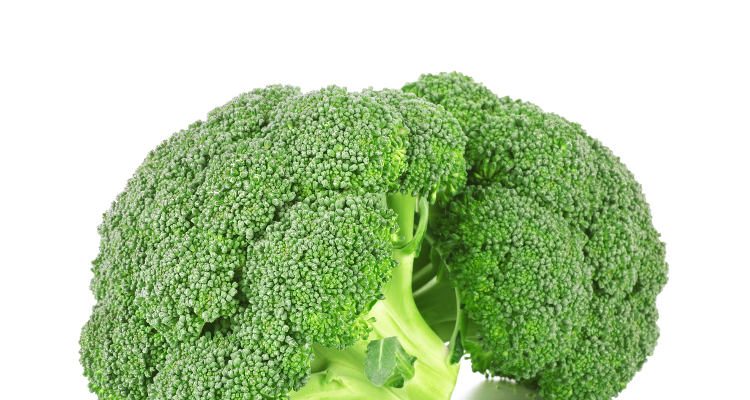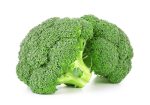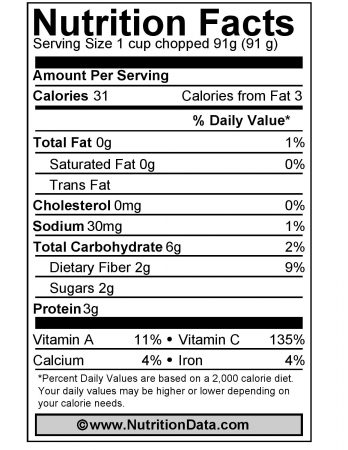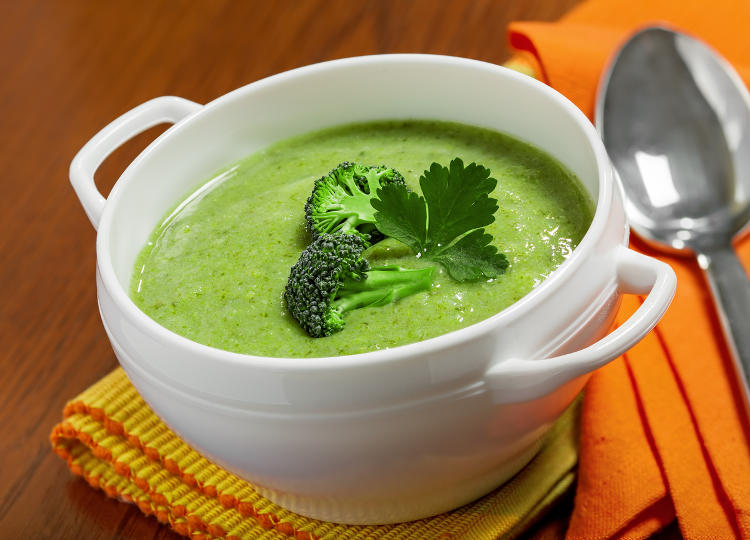
Broccoli belongs to the cruciferous vegetable family of cabbage, collard greens, cauliflower, Brussels sprouts, and kale. This low-calorie superfood is packed with nutrients, however, broccoli nutrition facts are often overlooked. Broccoli is rich in antioxidants, and vitamins C and K.
How many calories are in broccoli? The calories in broccoli are almost negligible. A one ounce serving of broccoli contains only nine calories.
Broccoli Nutrition Facts
A serving of 100 grams of broccoli contains only 34 calories. It contains seven grams of carbs, and almost three grams of fiber and protein. The fiber content of broccoli has 10% of the recommended daily intake, while the protein and carbs have five percent and two percent, respectively.
According to the Centers for Disease Control and Prevention, half a cup of broccoli has four percent of the recommended daily intake of fiber, 20% of vitamin A, and two percent each of calcium and iron.
Carbs can be categorized as good or bad according to a scale known as the Glycemic Index (GI), depending upon how a particular food raises the blood sugar levels.
Broccoli doesn’t spike blood sugar as quickly as processed foods. The Glycemic Index of broccoli is 15 out of 100.
Health Benefits of Broccoli
Broccoli not only looks good on the plate, but has ample of benefits, too. Some of these broccoli benefits will surely surprise you.
Cancer Prevention
The anti-inflammatory, antioxidant, and pro-detoxification properties of broccoli help prevent cancer. According to research studies, the risk of prostate cancer, colon cancer, breast cancer, bladder cancer, and ovarian cancer decreases with regular consumption of broccoli.
To help fight against cancer causing agents, the Linus Pauling Institute recommends five servings per week of broccoli and other vegetables.
Improves Detoxification
Harmful toxins possess a risk to the cells in the body and they must be detoxified. The isothiocyanates made from the glucosinolates in broccoli helps to improve the detoxification.
Digestive Support
The digestive support provided by broccoli can be classified into two categories: fiber support, and ITC (isothiocyanate) support.
The glucosinolates (phytonutrients) present in broccoli are converted by the body into isothiocyanates, particularly sulforaphane. It protects our stomach lining and prevents bacterial overgrowth of Helicobacter pylori, or clinging of this bacteria to our stomach walls.
Cardiovascular Support
Broccoli lower levels of LDL-cholesterol in our bloodstream. According to a study, an intake of 1/3 cup of broccoli per day for three months reduces LDL-cholesterol by about two-and-half percent.
Eye Health
The carotenoids present in broccoli, lutein and zeaxanthin, play a vital role in maintaining good eye health.
Problems in the lens area of the eye (e.g. cataracts) have both been show to lessen with the intake of foods rich in lutein and zeaxanthin.
Can You Eat Raw Broccoli?
Various cooking methods cause vegetables to lose their nutritional value. Broccoli is rich in vitamin C, and eating it raw helps preserve its nutritional value.
Water-soluble vitamins are lost when broccoli is cooked in excess amounts of water; and steamed broccoli nutrition decreases as well. Broccoli should be consumed raw to avoid the loss of nutrients.
To minimize the loss of vitamins present in broccoli, it should be steamed instead of boiled. Chewing or chopping broccoli releases a type of chemical in the food called glucosinolates. According to the Linus Pauling Institute, glucosinolates are powerful anti-cancer agents that neutralize cancer-causing substances before they can damage healthy cells.
According to a research study published in the Journal of Agricultural and Food Chemistry, raw broccoli has more nutrients than cooked. Raw broccoli delivers a healthy dose of sulforaphane, which stimulates detoxifying enzymes present in the body and prevents cancer.
Research done on people eating raw or cooked broccoli showed that those who ate raw broccoli absorbed sulforaphane faster and in higher amounts compared to those who ate it cooked. Martijn Vermeulen, Ph.D., the study’s lead researcher suggests a method to preserve the sulforaphane content despite cooking. He insists to steam the vegetable until cooked, but it must still remain crunchy.
Healthy Broccoli Recipes
If you aren’t a big fan of broccoli and want to reap maximum broccoli nutrition, here are few simple and delicious recipes to help incorporate the superfood in your diet.
Broccoli Soup
Ingredients:
- ½ teaspoon salt
- 1 tablespoon butter
- 1 stalk celery, chopped
- 2 cloves garlic, chopped
- 1 teaspoon chopped fresh thyme or parsley
- 8 cups chopped broccoli (stems and florets)
- 2 cups water
- 1 tablespoon extra virgin olive oil
- 1 medium onion, chopped
- 4 cups reduced-sodium chicken broth, “no-chicken” broth or vegetable broth
- Freshly ground pepper to taste
- ½ cup half-and-half (optional)
Directions
Put butter and oil in a saucepan and heat it over medium heat until it melts. Add onion and celery and cook for four to six minutes or until it softens. Add garlic and thyme and stir until fragrant, about 10 seconds.
Add broccoli, water, and broth and simmer over high heat. Reduce the heat and cook until tender for about eight minutes. Let the mixture cool and blend it in batches in a blender.
Add half-and-half, and season it with salt and pepper. Serve hot. You can refrigerate the soup for for days or freeze it for up to three months.
Cheesy Broccoli-Potato Mash
Ingredients:
- 1 pound potatoes, cut into wedges
- ½ cup non-fat milk, heated
- ½ teaspoon salt
- ¾ pound broccoli crowns, chopped (4 cups)
- ¾ cup shredded Fontina cheese
- Freshly ground pepper, to taste
Directions
In a large saucepan fitted with steamer basket, cover and steam the potatoes for 10 minutes. Add the broccoli on top of the potatoes and steam covered for six to eight minutes or until tender. Remove the broccoli and place in a bowl.
Mash broccoli with a potato masher. Add the potatoes and mash. Add cheese, milk, salt, and pepper and continue mashing until you get the desired consistency. Serve immediately.
Related:
Sources:
“What’s New and Beneficial About Broccoli,” The World’s Healthiest Foods web site; http://www.whfoods.com/genpage.php?tname=foodspice&dbid=9, last accessed January 25, 2017.
Kenny, F., “Which Broccoli Is Better: Raw or Cooked? ,” Eating Well web site, April 2009; http://www.eatingwell.com/nutrition_health/nutrition_news_information/which_broccoli_is_better_raw_or_cooked.
“Pureed Broccoli Soup,” Eating Well web site; http://www.eatingwell.com/recipe/249991/pureed-broccoli-soup/, last accessed January 25, 2017.
“Cheesy Broccoli-Potato Mash,” Eating Well web site; http://www.eatingwell.com/recipe/249512/cheesy-broccoli-potato-mash/, last accessed January 25, 2017.
“Pureed Broccoli Soup,” Eating Well web site; http://www.eatingwell.com/recipe/249991/pureed-broccoli-soup/, last accessed January 25, 2017.















